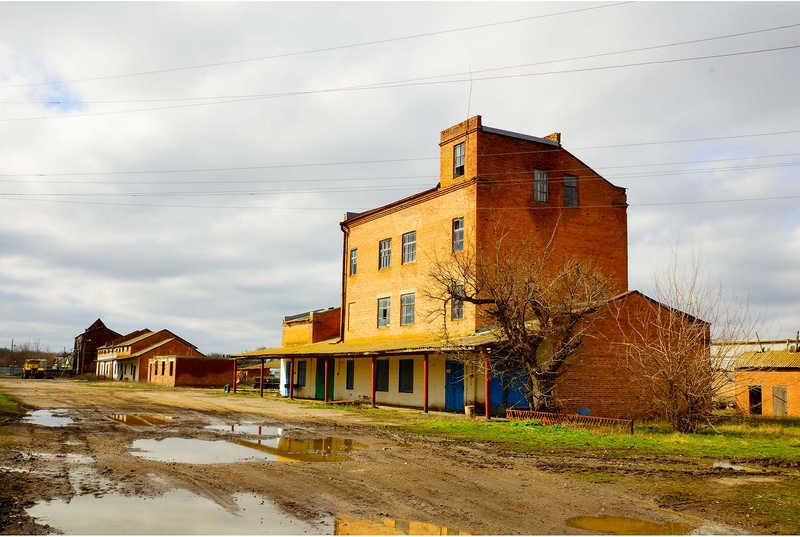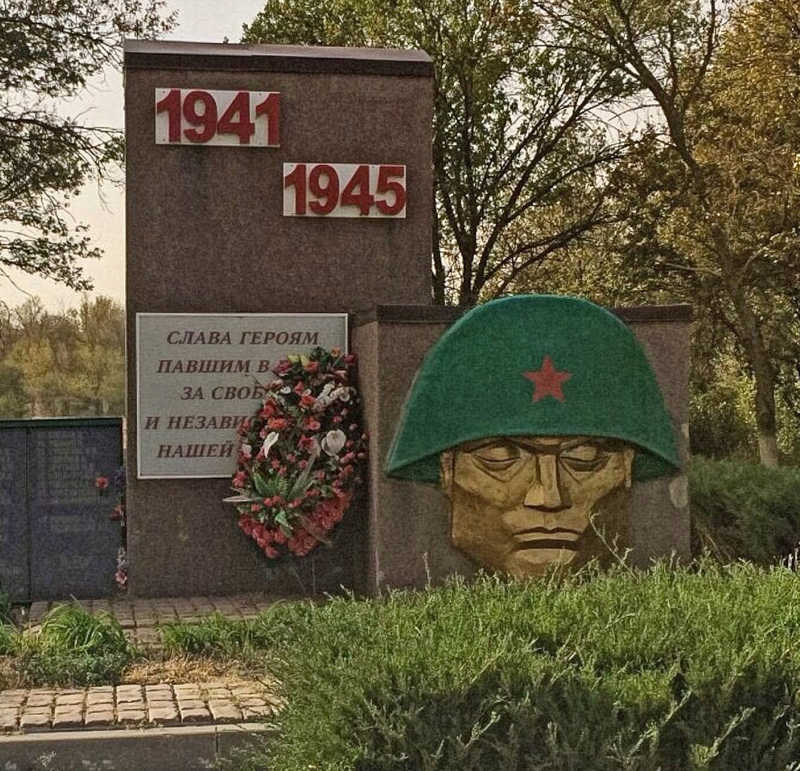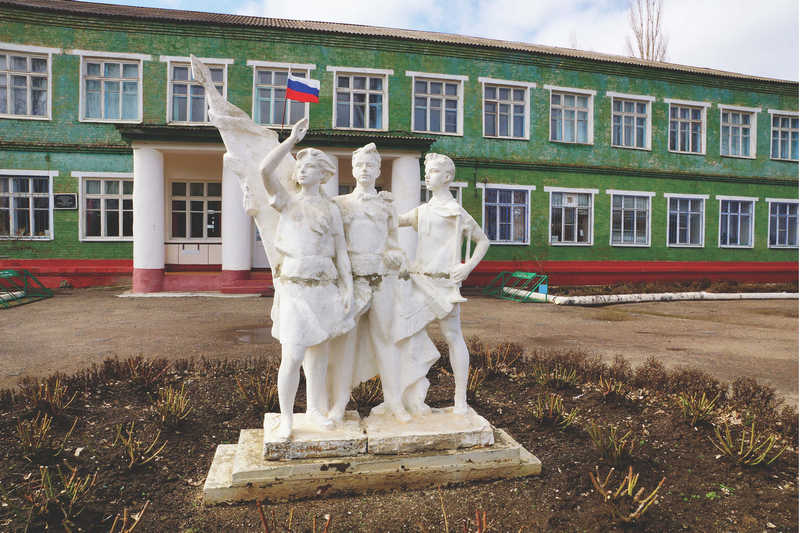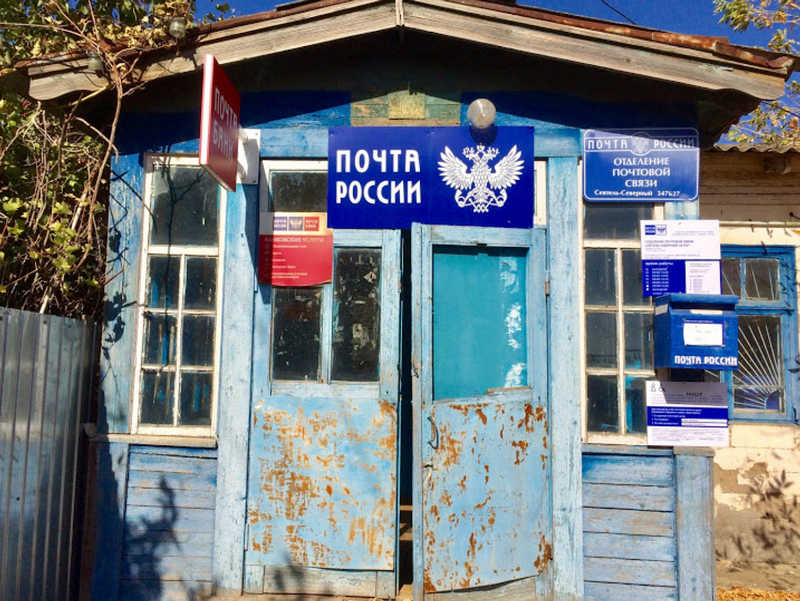
Today, Seiatel' Severigny (Sower North) is a small, economically depressed village. On the Google map, follow the road south from Seiatel' Severigny to Seiatel' Yuzhnyy (Sower South), which is much smaller and seems to be entirely residential. Seiatel' Yuzhnyy is the site of the initial settlement in the bend of the river. I was unable to find current population data. The two villages are part of the Sal'sk district, centered on the city of Sal'sk, 19 miles (30 kilometers) to the east, which is also economically depressed.
During the post-WWII era, the collective farm continued to thrive, producing bumper crops, and received recognition as "Collective Farm of Communist Labor" and "Collective of High Culture of Agriculture." In 1977, the farm was awarded the Order of Lenin, a most unusual recognition for a collective farm. Six villagers were named as Heroes of Socialist Labor.[1]

There were significant changes after the conversion to a collective farm. Individual family homes replaced the dormitories and apartment buildings of the commune. The communal dining hall gave way to individual family kitchens. After WWII, Soviet authorities contributed to the construction of a new school and a Dom Kul'tury (House of Culture), a community center for art and performances.

The recent history of the village has not been a happy one. As one recent journal article put it, "In the 90s of the last century, banditry capitalism arrived here from Moscow, which took communism away from the gullible villagers."[2]
In an article in 2013, Alexey Panfilovich explained, "The economy of [Seiatel'], which was once thundering throughout the country, has fallen into complete decline over the past two decades. . . . Once a prosperous economy with the best fertile lands in the region passed from hand to hand several times. Investors who were not committed to the common cause tried only to squeeze the maximum out of the economy. As a result, it actually disintegrated. The fields are overgrown with weeds, the infrastructure of the village has come to a complete decline. . . . A destructive whirlwind swept over the famous collective farm in the early 90s and continues to this day. Replacing each other, investors tore apart the once advanced economy."

You can find photos of the present Seiatel' Severigny online, through Google map above right. Click on the little person in the lower right. That will open a "photo sphere." You can follow the route through part of the village. There are also a number of photographs in two recent online publications, available here.
As the photos show, not all streets are paved, and those that are paved seem not to be well maintained. The few active commercial buildings include a housewares store and a Sperbank, a branch of the largest bank in Russia, which is owned by the state. There are a few other commercial buildings and a post office.
In addition to the WWII memorial (right), there is also a Lenin monument, as is true of many places in Russia. In Seaitel' Severigny, there are also monuments to the commune's agricultural past. One of the early tractors is mounted on a pedestal. Another monument commemorates the plowing of the first furrow in the previously unturned steppe sod. The caption reads, The machine operator S.O. Grinkevich plowed the first furrow on October 14,1922. You can find photos at https://meotyda.ru/node/1159.

The commune's dining hall was destroyed in a fire caused, according to Panfilovich in his 2013 article, by a disregard for the building by an outside investor, not part of the community. [3] Several of the commune's industrial structures survive but are unused.
Dom Kul'tury (House of Culture), the community's civic center, holds examples of socialist realist art and has a place for performances. The exterior still has a fading mural with a Soviet red flag. The most impressive and best maintained building seems to be the school, which apparently serves the two Seiatel' villages and perhaps some of the surrounding area. There are many photos of current school activities at http://shkola84.3dn.ru/. The village library also maintains a display of items from its history as a commune and collective farm.

Other buildings in the town seem to be mostly private residences, perhaps for those employed in agriculture or in the cannery in the southwest corner. The cannery (on the Google map) is labeled as part of the limited liability company Prodresurs, which deals in grain, seeds, and animal feeds, and which may operate what is left of the agricultural portion of the commune. Other residents may commute to larger population centers for work; Salsk is about a thirty-minute drive away. The highway is paved and seems to be well maintained, something not always the case for highways in Russia.
• Appendix A: "Commune Seattle" by Anna Louise Strong, 1933
•Appendix B: Oscar Hendrickson's Conviction and Rehabilitation
[1] Alexey Panfilovich, "How the 'Sower' died," NVGAZETA.RU, No. 301, June 28, 2013, online at https://www.nvgazeta.ru/news/12374/476014/; translation by Google.
[2] "Lost America (North and South Seattle) of the Rostov region," LiveJournal, April 1, 2018, online at https://ankol1.livejournal.com/193605.html; translation by Google.
[3] Panfilovich, "How the 'Sower' died."
.